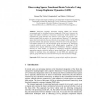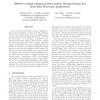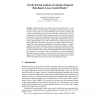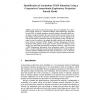76 search results - page 6 / 16 » Spatiotemporal Novelty Detection Using Resonance Networks |
IPMI
2009
Springer
14 years 11 days ago
2009
Springer
Functional magnetic resonance imaging (fMRI) has become increasingly used for studying functional integration of the brain. However, the large inter-subject variability in function...
SECON
2008
IEEE
14 years 2 months ago
2008
IEEE
Sensor networks will shortly consist of globally deployed sensors providing real-time geo-centric information to users. Particularly, users with mobile devices will issue ad-hoc q...
DBSEC
2008
13 years 9 months ago
2008
With the growing use of wireless networks and mobile devices, we are moving towards an era where spatial and temporal information will be necessary for access control. The use of s...
EVOW
2009
Springer
13 years 11 months ago
2009
Springer
In this paper the node-level decision unit of a self-learning anomaly detection mechanism for office monitoring with wireless sensor nodes is presented. The node-level decision uni...
IDEAL
2005
Springer
14 years 1 months ago
2005
Springer
Abstract. The work presented in this paper shows the capability of a connectionist model, based on a statistical technique called Exploratory Projection Pursuit (EPP), to identify ...




